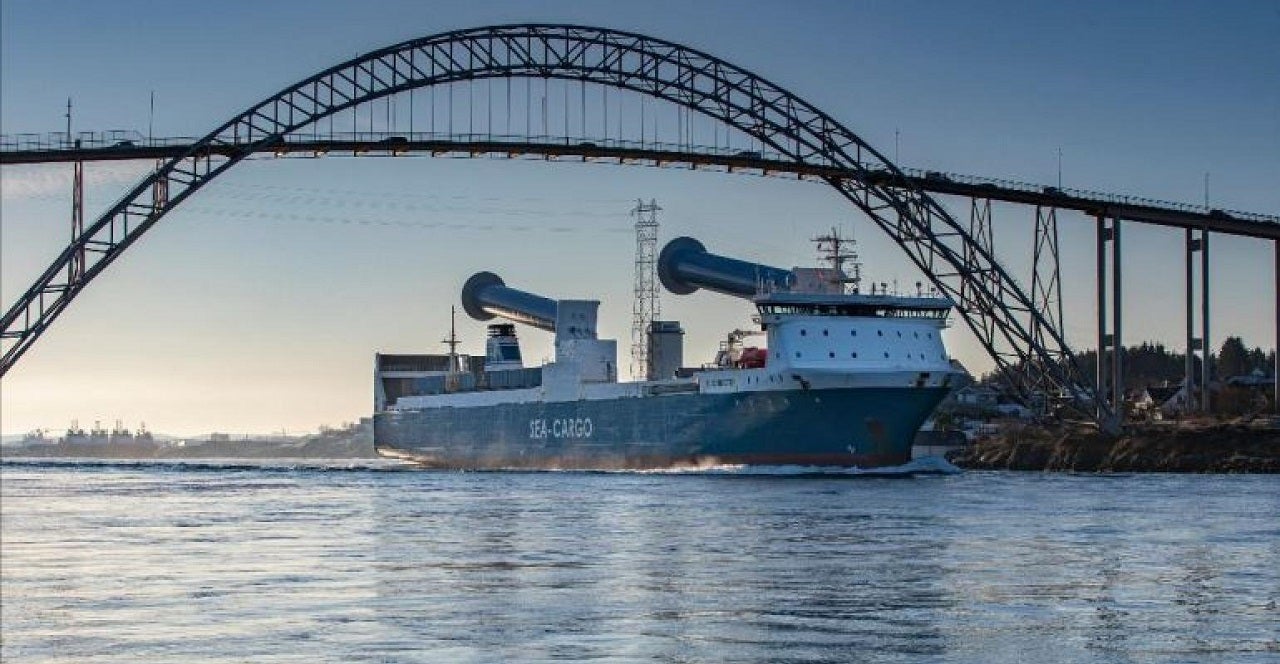
Norsepower, a provider of auxiliary wind propulsion systems, has installed two 35m-tall Rotor Sails on board the North Sea market logistics provider SEA-CARGO’s 12,251 gross tonne (GT) side-door roll-on / roll-off (RoRo) ship named SC Connector.
The company said that it is the first installation of the tiltable Rotor Sail in the world.
The installation will benefit those vessels, which have to negotiate routes with height restrictions.
Norsepower Rotor Sail Solution is the first third-party verified and commercially operational auxiliary wind propulsion technology for the marine industry.
The solution is completely automated and can detect strong winds, after which the Rotor Sails start automatically.
Norsepower noted that the installation will help the SC Connector achieve a reduction in fuel consumption, fuel cost, and carbon emissions by approximately 25%.

US Tariffs are shifting - will you react or anticipate?
Don’t let policy changes catch you off guard. Stay proactive with real-time data and expert analysis.
By GlobalDataMoreover, in favourable wind conditions, the sailing ship will also be able to maintain steady service speed by sail alone.
Norsepower’s Rotor Sail Solution is a modernised version of the Flettner rotor.
Flettner rotor is a spinning cylinder that operates on the Magnus effect for harnessing wind power to thrust a vessel.
Norsepower CEO Tuomas Riski said: “Completing the installation has been extremely rewarding, as it reflects how, in taking a collaborative approach with a customer, we can innovate to create solutions that allow Rotor Sails to benefit almost any vessel type or trading route.
“As we get closer to 2030 IMO targets, we are seeing our technology gaining momentum, with the market seeing the flexibility we can provide to suit different vessel requirements. This installation demonstrates the technology can go a long way to future-proofing IMO GHG compliance, while ensuring significant emissions and fuel reductions to a variety of vessel profiles today.”
SEA-CARGO managing director Ole Sævild added: “We are focussing on utilising available renewable energy and using it for direct propulsion to design more environmentally friendly vessels. The Rotor Sail technology has been proven in the market for a while but the size is unique for our project.
“The sails are far more efficient than conventional sails of the same size and the tilting function is essential to our voyage routes. Given the estimated emissions savings, we will use our experience of this full-scale project and proceed to develop it further for other vessels in our fleet.”
Sailing between Western Norway, Denmark, the Netherlands, as well as Sweden and Poland, SC Connector has to travel under multiple bridges and powerlines, which calls for adaptation on the part of the Rotor Sails to tilt to almost horizontally when required.



